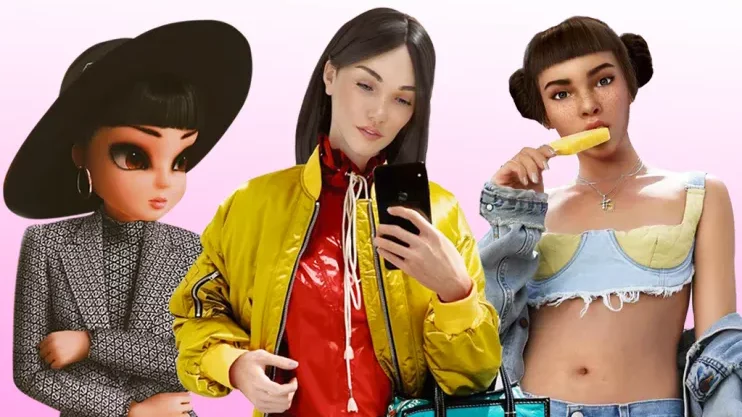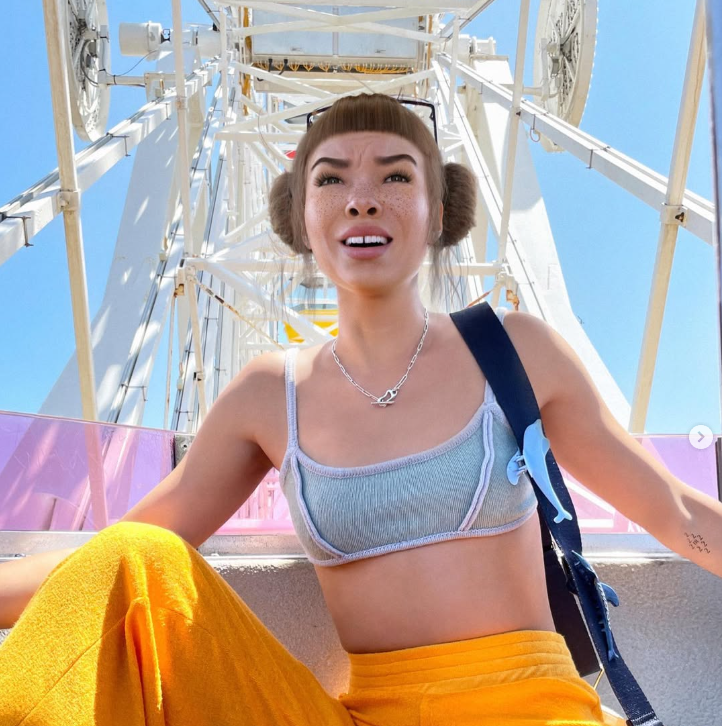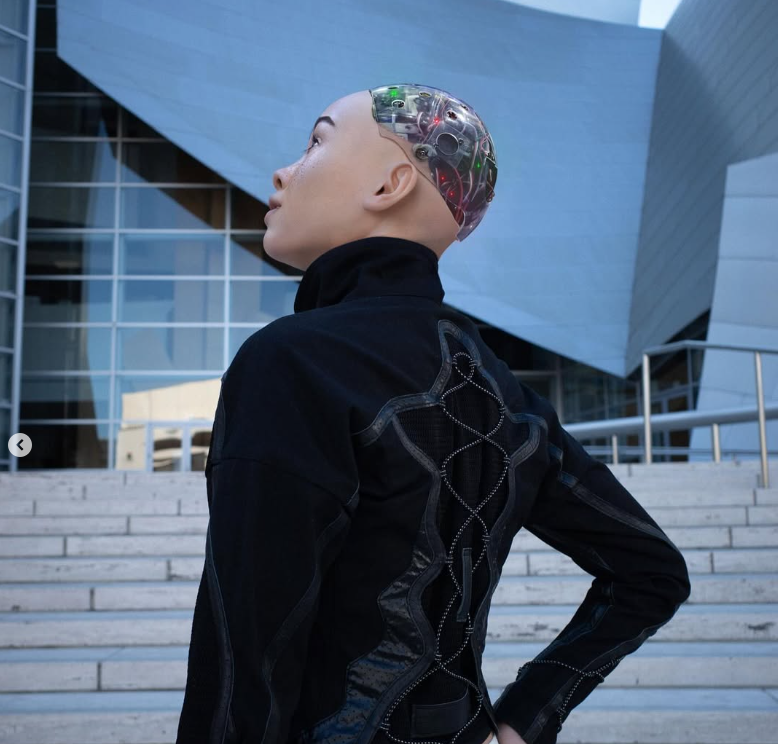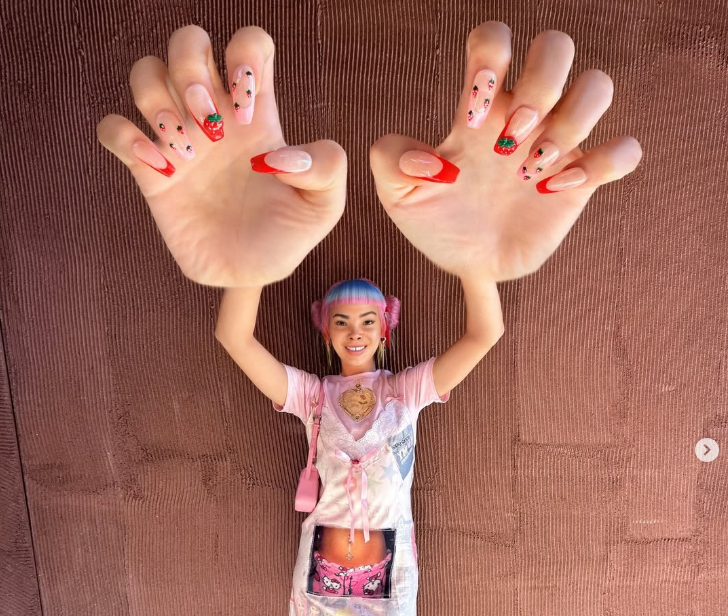By Sara Akkermann

They look like real people, pose in trendy outfits, and collect millions of followers: Virtual influencers are changing the fashion world. But they are not real models – they are computer-generated characters, often created using AI and 3D design (Conti 2022). They are flawless, flexible – and they are changing how fashion is presented, promoted and sold. One of the most famous is Lil Miquela, who has gained millions of followers on platforms like Instagram and TikTok since 2016 (The Influencer Marketing Factory 2024).
Why virtual influencers are attractive for fashion brands
Virtual influencers are interesting for brands because they can be easily changed and adapted to fit any style or idea the brand has (Allal-Chérif et al. 2024) – from body shape to clothes to background. They can take any role, wear any look, and are not limited by real-world things like location, time, or weather. Brown hair today, pink tomorrow, dressed in a trendy outfit at a fair or as a cyberpunk robot – everything is possible through programming.



For fashion brands, this means maximum control (Bringe 2022): Virtual influencers can be adjusted to follow trends, join campaigns or wear completely digital fashion – with no need for logistics or staff. Also, there is almost no risk of scandals from their private lives – a big advantage for long-term partnerships (Allal-Chérif et al. 2024).
“The virtual influencer may be for the human influencer as the Uber service is for the Taxi service.”
– Batista da Silva Oliveira and Chimenti 2021)
How are virtual influencers changing the marketing world?
Brands like Prada, Samsung, and BMW have already worked with virtual influencers like Lil Miquela. In the fashion world, these digital characters are seen as innovative, modern, and visually exciting – an image many brands want to use (Allal-Chérif et al. 2024).
But there’s still the question: Are they taking the spotlight from real influencers?
Not completely. Virtual influencers are technically impressive, but they only pretend to have a personality. Human influencers show real life, with mistakes and opinions. On social media, authenticity matters a lot (Dondapati & Dehury, 2024). Pandelaere et al. (2010) found that people prefer what they know first because it feels more original. Since we’re used to human influencers, virtual ones may seem less authentic.
Fake but fashionable? The influence on consumers
Virtual influencers can be very effective – if their character matches the brand and the audience (Allal-Chérif et al. 2024). Successful virtual influencerss tell stories, have hobbies, opinions and grow over time. This storytelling creates connection and trust – which is key for buying decisions in fashion (Allal-Chérif et al. 2024).
But there is also criticism, as shown in the study by Conti et al. (2022): Many virtual influencers show unrealistic beauty standards – always perfect, thin, and stylish. These stereotypes can be harmful, especially for young social media users. There’s also the “uncanny valley”: the strange feeling when a digital figure looks almost human, but not completely real. This can make people feel uncomfortable and reduce how well the ad works (Allal-Chérif et al. 2024).
Is the hype over?
Virtual influencers like Lil Miquela were once seen as super cool because they balanced autonomy and uniqueness just right – they felt fresh, original, and set trends. According to the autonomy–coolness model of Warren and Campbell (2014), coolness rises with increasing autonomy up to a point, but if something has too little autonomy, it feels boring and unoriginal. Today, there are many different virtual influencers because everyone can create them – LilMiquela therefore struggles to stand out. For example, her likes, comments, and follower growth has dropped significantly compared to her peak during the early pandemic times (FollowerStat 2025). This possibly shows that her perceived autonomy and uniqueness have diminished, making her less relevant and less cool.
Conclusion
Virtual influencers won’t replace real people soon. But they are a effective option for marketing – especially in fashion, where innovation, visuals, and storytelling are very important. They open new ways for brands to express themselves – especially brands that think digitally and like to try new things. However, the real challenge for virtual influencers is to stay interesting for the audience – otherwise, the hype will fade quickly.
What do you think: Are virtual influencers exciting, strange – or maybe the future?
Bibliography
Allal-Chérif, O., Puertas, R., & Carracedo, P. (2024). Intelligent influencer marketing: How AI-powered virtual influencers outperform human influencers. Technological Forecasting and Social Change, 200, 123113. https://doi.org/10.1016/j.techfore.2023.123113.
Batista da Silva Oliveira, A. und Chimenti, P. (2021). Humanized Robots: A Proposition of Categories to Understand Virtual Influencers. Australasian Journal of Information Systems (25).
Bringe, A. (2022). The Rise Of Virtual Influencers And What It Means For Brands. Forbes. https://www.forbes.com/councils/forbescommunicationscouncil/2022/10/18/the-rise-of-virtual-influencers-and-what-it-means-for-brands/ [retrieved 09.05.2025].
Conti, M., Gathani, J. und Tricomi, P.P. 2022. „Virtual Influencers in Online Social Media,” IEEE Communications Magazine (60:8), S. 86-91.
Dondapati, A., & Dehury, R. K. (2024). Virtual vs. human influencers: The battle for consumer hearts and minds. Computers in Human Behavior: Artificial Humans, 2(1), 100059. https://doi.org/10.1016/j.chbah.2024.100059.
FollowerStat (2025). Overview Analysis of LilMiquela. Followerstat.com. @lilmiquela – Instagram stats & complete analytics data for Miquela IG account – Instagram Stats & Free Analytics Stats Online | FollowerStat.com [retrieved 09.05.2025].
Graham, L. (2019). Virtual influencers pose ethical dilemmas for the ad industry. Cityam. https://www.cityam.com/virtual-influencers-and-ethics/ [retrieved 09.05.2025].
Pandelaere, M., Millet, K., & Van den Bergh, B. (2010). Madonna or Don McLean? The effect of order of exposure on relative liking. Journal of Consumer Psychology, 20, 442-451. https://doi.org/10.1016/j.jcps.2010.07.003
The Influencer Marketing Factory 2024 „Virtual Influencers Survey + infographic,” https://theinfluencermarketingfactory.com/virtual-influencers-survey infographic/. [retrieved 09.05.2025].
Warren, C. & Campbell, M. (2014). What Makes Things Cool? How Autonomy Influences Perceived Coolness. Journal of Consumer Research (41).
Leave a Reply